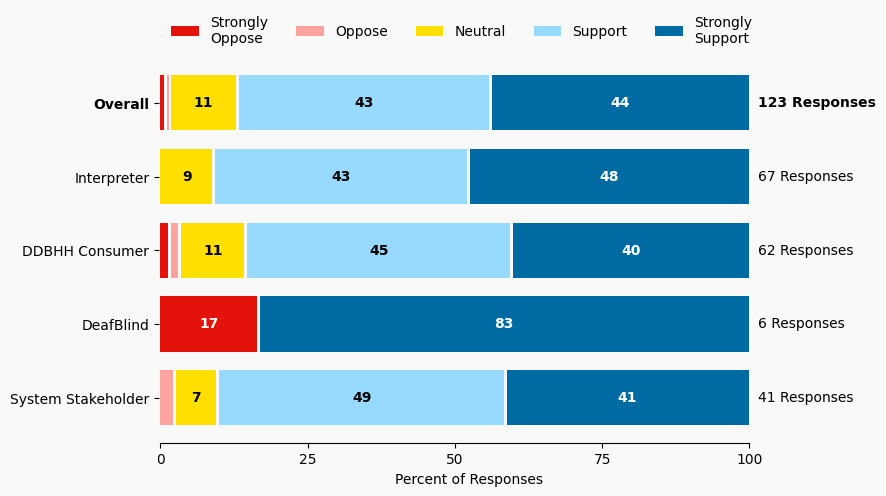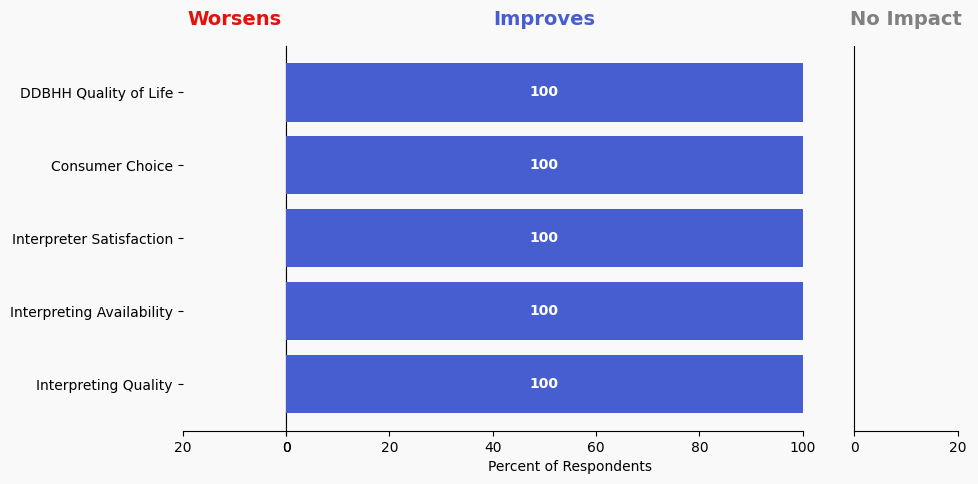51 Host ProTactile Language Interpreting Intensive in Minnesota
Issue: More interpreters are needed to provide effective communication for DeafBlind interpreting requests
Proposed Solution: State Services DeafBlind Grant awardees could invite DeafBlind trainers and host an onsite ProTactile Language Interpreting (PLI) intensive training for Minnesota-based interpreters. Topics which could be included: training regarding ambidexterity co-navigating oral interpreting (for those who are hard of hearing) how to approach regular check-ins with consumers on what their immediate communication needs are in any setting other topics requested by DeafBlind consumers.
Expected outcome: A larger pool of interpreters with skills for working with DeafBlind persons.
Who is impacted: DeafBlind consumers, interpreters, hiring entities
Timeline: 6 months
Note: Interpreters are strongly encouraged to complete the online “Protractile Theory Certificate” program at any time; interpreters are required to complete this online program prior to the onsite PLI intensive. If funding does not allow a full PLI Intensive, consider hosting more advanced DeafBlind interpreting workshops.

Summary of Support Image Description
The stacked bar charts show how respondents rated their level of support and the total number of responses. The percentage for the five support levels is shown from left to right: Strongly Oppose (Dark Red), Oppose (Light Red), Neutral (Yellow), Support (Light Blue), and Strongly Support (Dark Blue).
Respondents may identify with multiple subgroups. The overall level of support is:
Overall
Strongly Oppose: 1%
Oppose: 1%
Neutral: 11%
Support: 43%
Strongly Support: 44%
Click to see the detailed image description for each subgroup.
Interpreter
Strongly Oppose: 0%
Oppose: 0%
Neutral: 9%
Support: 43%
Strongly Support: 48%
DeafBlind
Strongly Oppose: 17%
Oppose: 0%
Neutral: 0%
Support: 0%
Strongly Support: 83%
DDBHH Consumer
Strongly Oppose: 2%
Oppose: 2%
Neutral: 11%
Support: 45%
Strongly Support: 40%
System Stakeholder
Strongly Oppose: 0%
Oppose: 2%
Neutral: 7%
Support: 49%
Strongly Support: 41%
Overview of Respondents Opting for In-Depth Solution Analysis
After indicating their support level, 4% of the 123 respondents opted in to further assess whether the solution would worsen or improve on five metrics. Of the opt-in reviewers (5 respondents), 100% supported the solution, 0% were neutral on the solution, and 0% opposed the solution.
The remaining 118 respondents did not opt in to further assess the solution. Of these people, 86% support the solution, 11% were neutral on the solution, and 1% opposed the solution.
Reviewer Evaluation of Solution Effectiveness

Solution Effectiveness Image Description
The stacked bar charts show how respondents assessed the effectiveness of this solution based on five metrics. For each metric, the percentage of respondents is shown from left to right: Worsens (Red), Improves (Blue), No Impact (Gray).
DDBHH Quality of Life
Makes It Worse 0%
Makes It Better 100%
No Impact 0%
Interpreter Satisfaction
Makes It Worse 0%
Makes It Better 100%
No Impact 0%
Consumer Choice
Makes It Worse 0%
Makes It Better 100%
No Impact 0%
Interpreting Availability
Makes It Worse 0%
Makes It Better 100%
No Impact 0%
Interpreting Quality
Makes It Worse 0%
Makes It Better 100%
No Impact 0%
Reviewer Feedback and Insights
Interpreter
Comments from Interpreters highlight the need for multiple sessions to ensure comprehensive training, suggesting collaboration with local institutions like Metro State University.
Deaf, DeafBlind, Hard of Hearing
Comments from DDBHH Consumers praise the idea, stressing the importance of ProTactile communication and the need for interpreters to receive specialized training in this area.
System Stakeholder
No comments were submitted.
PREVIOUS SOLUTION
50 Host DeafBlind Convention in MN
Issue: DeafBlind Minnesotans need more information about services and resources available to them; service providers need more information on service gaps.
NEXT SOLUTION
52 Establish Minnesota-based ProTactile House for DeafBlind
Issue: Many DeafBlind individuals do not always have exposure to ProTactile. Often interpreters have greater access to training than DeafBlind. While there is ProTactile Training offered at a ProTactile House in the Seattle area, it is expensive to travel and study there.
Leave a Reply